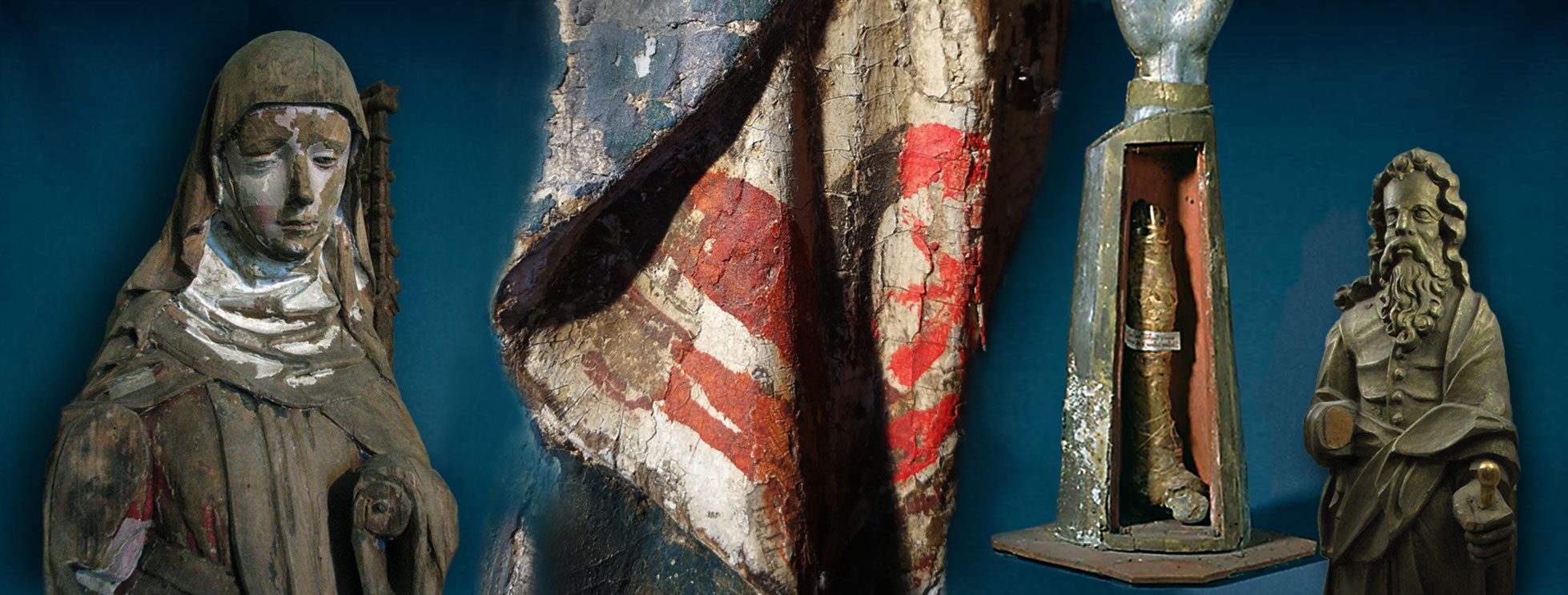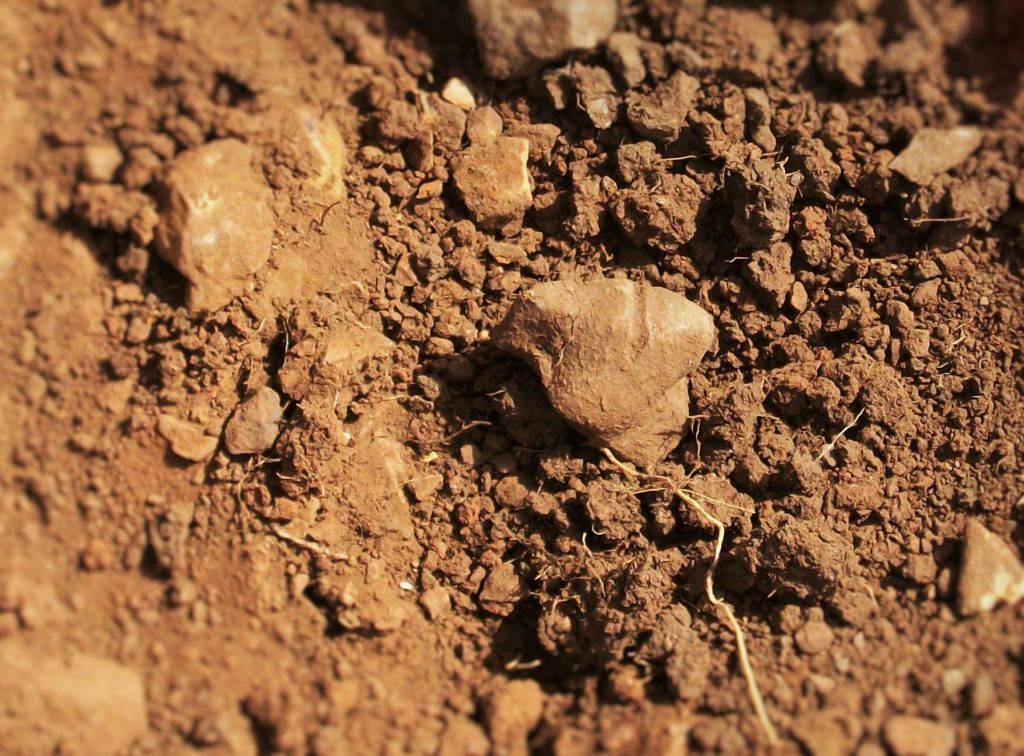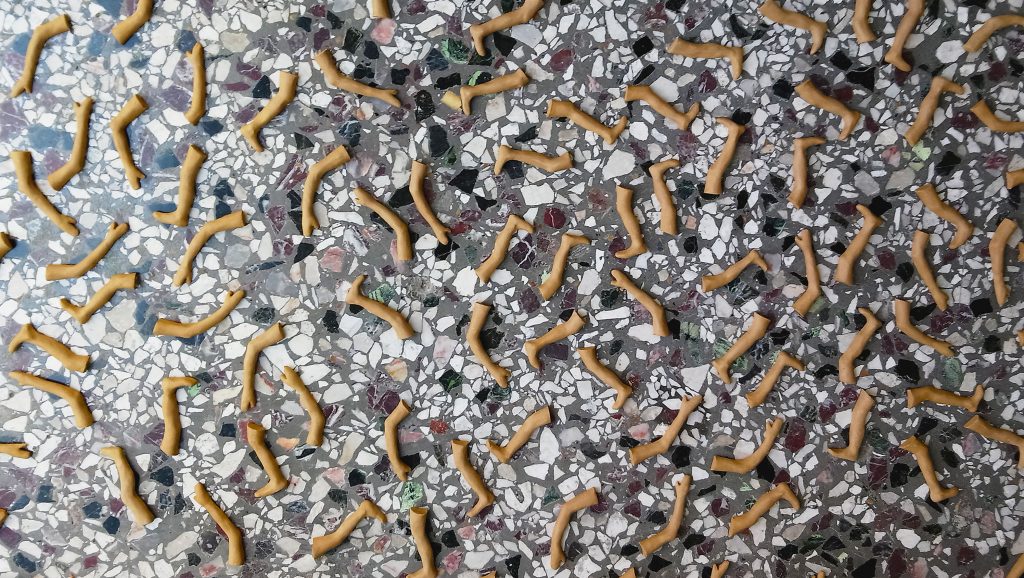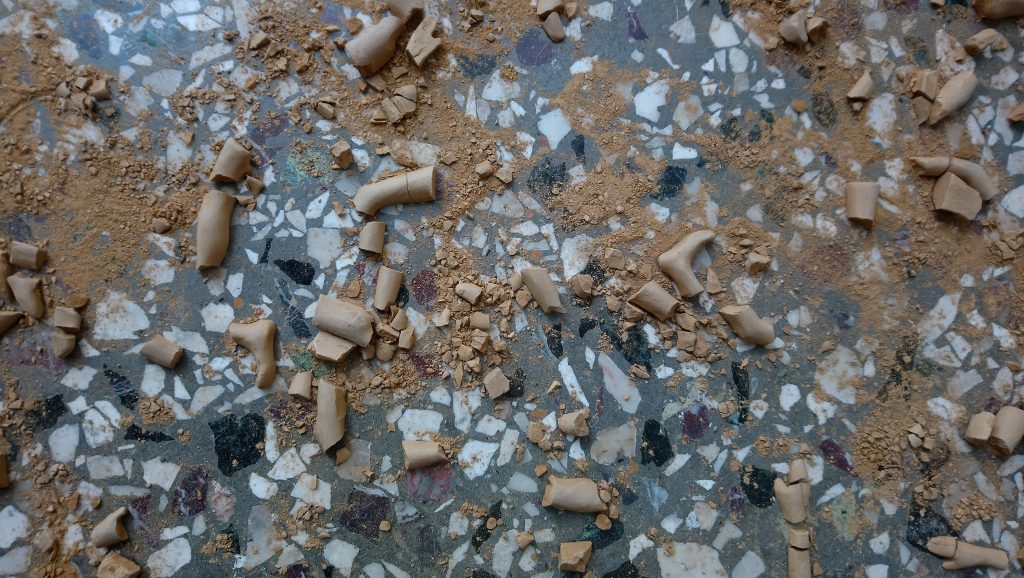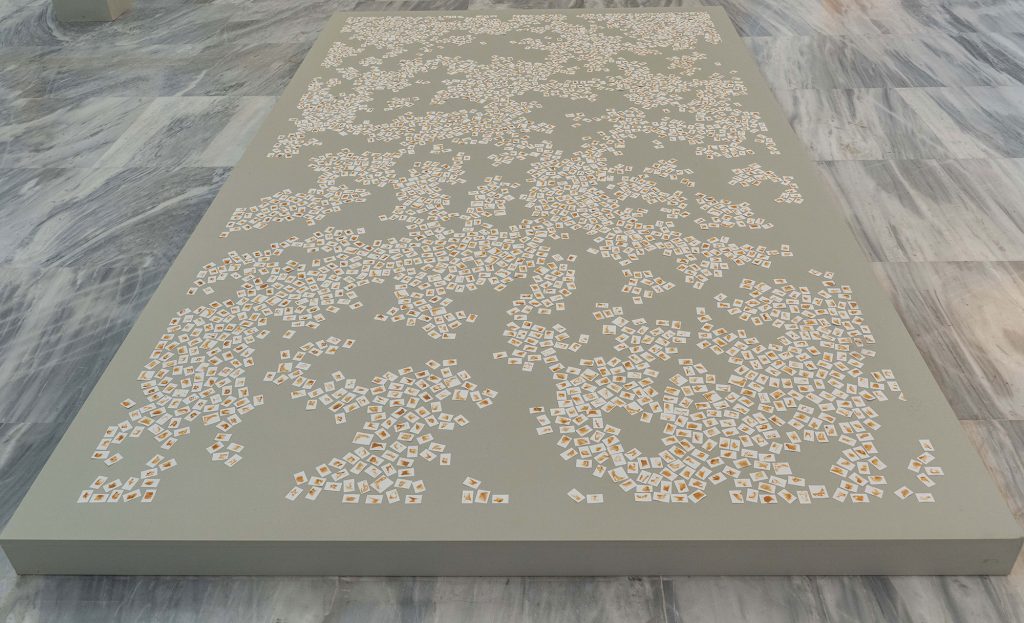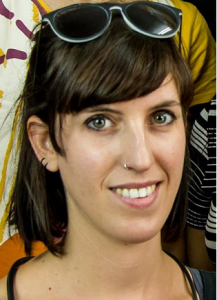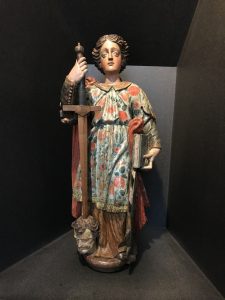
Catherine of Alexandria, 16th century, Portugal. Polychromed wood. Museu da Misericórdia do Porto. Photo: Sofia Lahti 2021. CC-BY
In the project Fragmentation and Iconoclash in Medieval and Early Modern Objects, I work on the theme of fragmentation in the context of reliquaries. An element of fragmentation in the very essence of relics and reliquaries are severed body-parts; as relics, fragments of saints’ bodies are kept inside reliquaries, but some reliquaries are also shaped as fragments, such as severed heads or hands. The same severed limbs are also present in medieval painting and sculpture, in images of saints and their martyr deaths.
Saint Catherine of Alexandria is usually recognised by her most common attribute, the wheel of torture, although that was not the instrument that caused her death. According to legend, the wheel specifically designed for her suffering and death did not fulfill its purpose, and she was finally decapitated with a sword – another attribute of hers. She is also portrayed with a book in order to demonstrate her wisdom and rhetorical wit, with which she converted twenty ”pagan” philosophers and several other people into Christianity. In a Portuguese 16th-century sculpture, she holds the book and the sword, looking serene in her dress patterned with flowers, the symbols of martyrs. At her feet is the severed head of a man, and the tip of the sword is thrust into it.
The sculpture, located in the Museu da Misericordia in Porto, is quite standard in many ways. Saints are often represented holding swords and books as references to their background or martyrdom. Signs of violence are typical, too, particularly in the Gothic art; saints are portrayed in terrible suffering and sometimes being decapitated, like Catherine herself. Decapitated saints can be portrayed as cephalophores, carrying their own severed head. Certain saints are portrayed standing on top of their diminished and de-humanized enemy; for St Catherine, that enemy was Emperor Maxentius, who is seen lying under her feet in various medieval images.

The Catherine of Alexandria (early 16th century, re-painted in 18th century) from Tyrvää church, Finland, is standing on the Emperor Maxentius. National Museum of Finland. Photo: National Heritage Agency, Finland. CC-BY.
It is not unusual in legends that a heavenly vengeance of some kind falls upon the saints’ enemies, but it does not happen by a physical act of violence by the saint. The enemy rather dies miraculously, as if struck by lightning. In art, becoming the ”underlier” is the ultimate punishment; admittedly, it is not entirely non-violent to stand on top of someone. Nevertheless, saints are generally not depicted as resorting to violence, only as being victims to it.
Emperor Maxentius, who had Catherine imprisoned, tortured and decapitated, did meet his destiny – or, as the legend says, his punishment. His head had a history of its own: after his death, he was decapitated as well, although that seems to have had nothing to do with Saint Catherine. After losing the battle to Emperor Constantine in Rome, he drowned, and then his severed head was carried through Rome by the celebrating winners.
Art has acted as divine justice, bringing Maxentius’ head into Saint Catherine’s hands and restoring Catherine’s own head to its original place as if it had never been severed. What surprised me was the way Saint Catherine isn’t only standing beside the enemy head with a large sword, implying it was she who beheaded him, but has even half-impaled the head with the tip of the sword. This is presenting the wise, eloquent, constant, chaste, and dignified virgin Catherine (these were her virtues according to the Golden Legend) in a very different light. She is presented as the taker of the Emperor’s head, visually in line with Judith or Salome. Saint Catherine, one would think, should not be in this group: she was the beheaded, not the beheader.
It seems a more concrete symbolism of revenge, battle and victory crept into the saintly iconography in the late medieval and early Baroque images. The impaling Catherine of Porto is so far the only one of its kind I’ve seen, but the elements of the severed head and the active use of the sword are not entirely unique. In other artworks from the 16th and 17th centuries, she has been presented with the head of Maxentius, instead of his entire shrunken figure, at her feet (see e.g. the 16th-century sculpture by Cristoforo Solari) and defeating him, with a foot on his throat (a 17th-century painting by Claudio Coello).
Perhaps closest to the composition of the Portuguese sculpture is a late-seventeenth-century painting by the Mexican Cristobal de Villalpando.
Simultaneously with the increasing signs of Saint Catherine’s aggression, the enemy has become less distorted. Instead of oozing inherent evil, Emperor Maxentius bears a striking resemblance to the beheaded Saint John the Baptist. An example of St John’s head as a 17th-century reliquary is on display nearby, in the same museum, but in a different room. Seeing the two heads next to each other might have been intriguing, but also puzzling: could the emperor present himself as a martyr of a lost religion, trampled by Christianity? Perhaps such an interpretation would be too far-fetched under the roof of a Catholic institution. Nevertheless, a perspective of relativity might creep into the room: if ”the good head” and ”the bad head” look alike, the judgment is in the eye of the beholder.
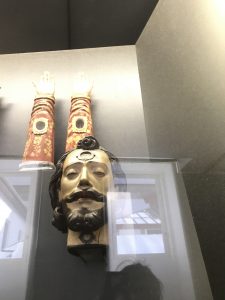
Head reliquary of St John the Baptist. 17th century, Portugal. Polychromed wood. Museu da Misericórdia do Porto. Photo: Sofia Lahti 2021. CC-BY
Sofia Lahti, postdoc researcher
Literature:
Julia Kristeva 1998. Visions capitales. Editions de la Réunion des musées nationaux, Paris.
Irma-Riitta Järvinen 2016. Transformations of Saint Catherine of Alexandria in Finnish vernacular poetry and rituals. Re-forming texts, music, and church art in the early modern north. Linda Kaljundi & Tuomas M.S. Lehtonen (eds.). Amsterdam University Press, Amsterdam.
Sofia Lahti 2019. Silver Arms and Silk Heads: Medieval Reliquaries in the Nordic Countries. Åbo Akademi, Åbo.
Jacobus de Voragine 1504, Legenda Aurea. Lugduni.
